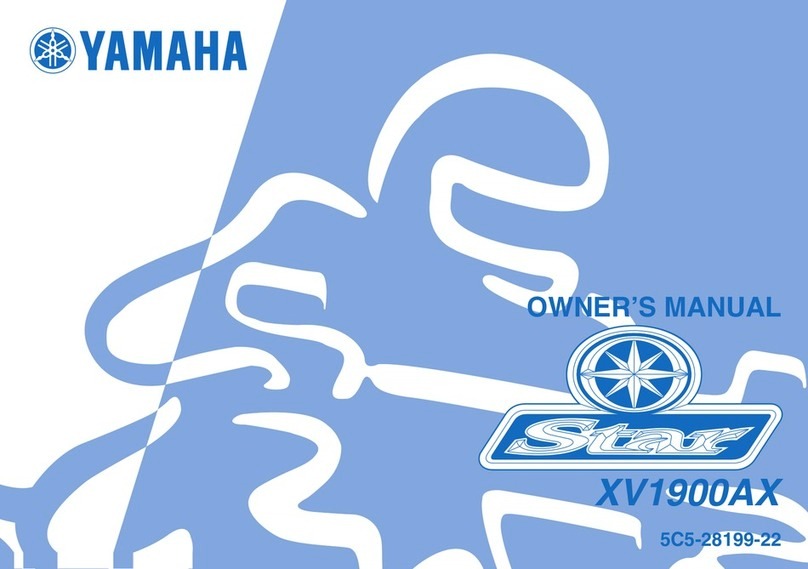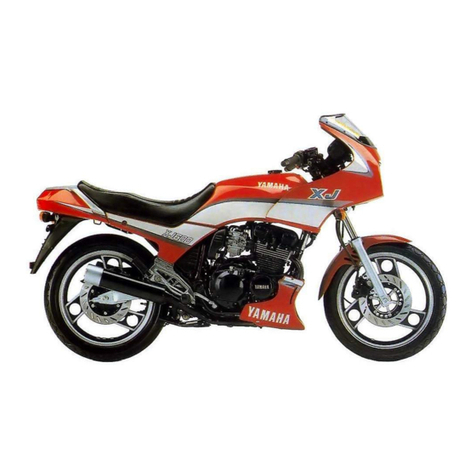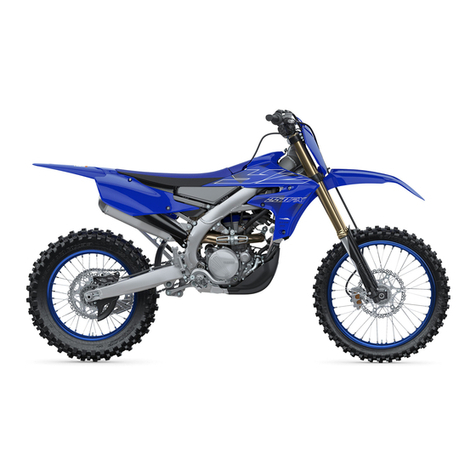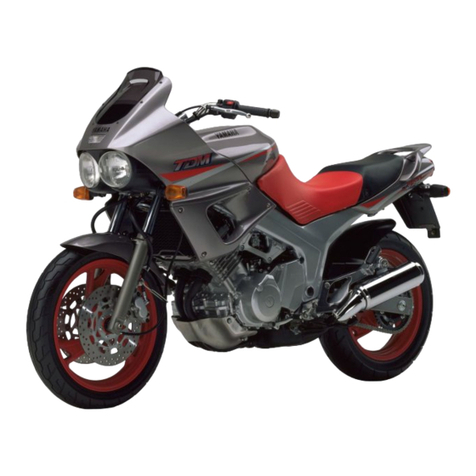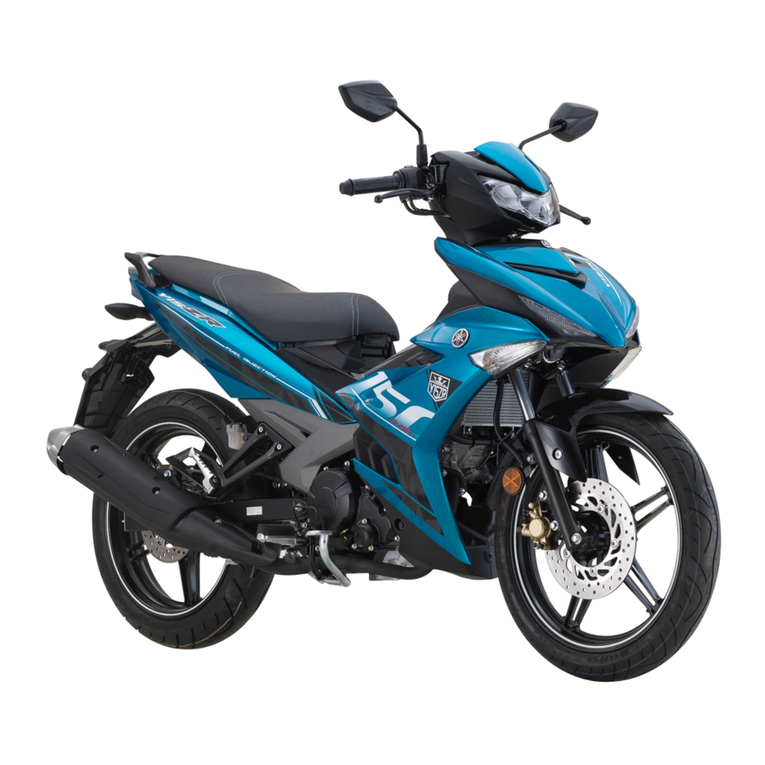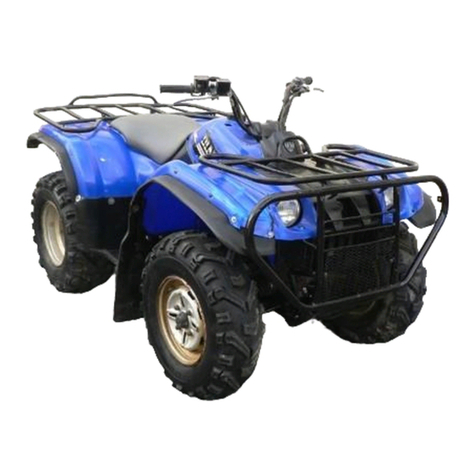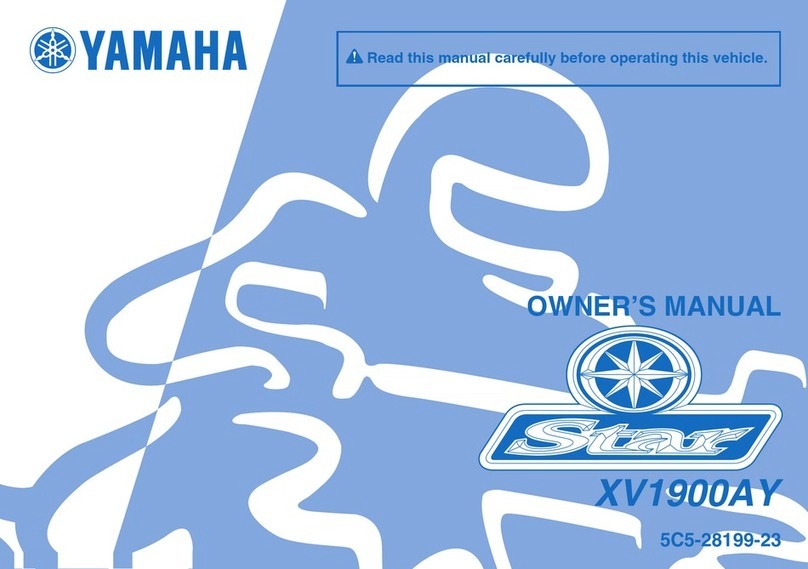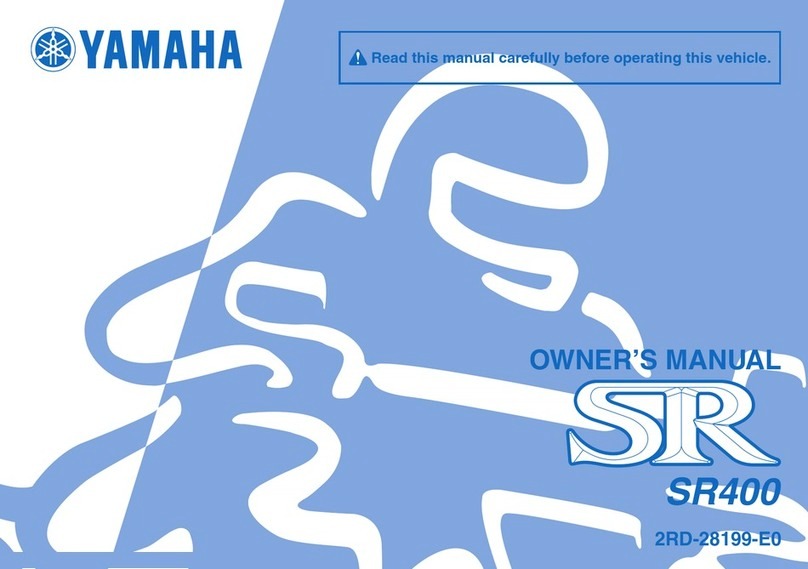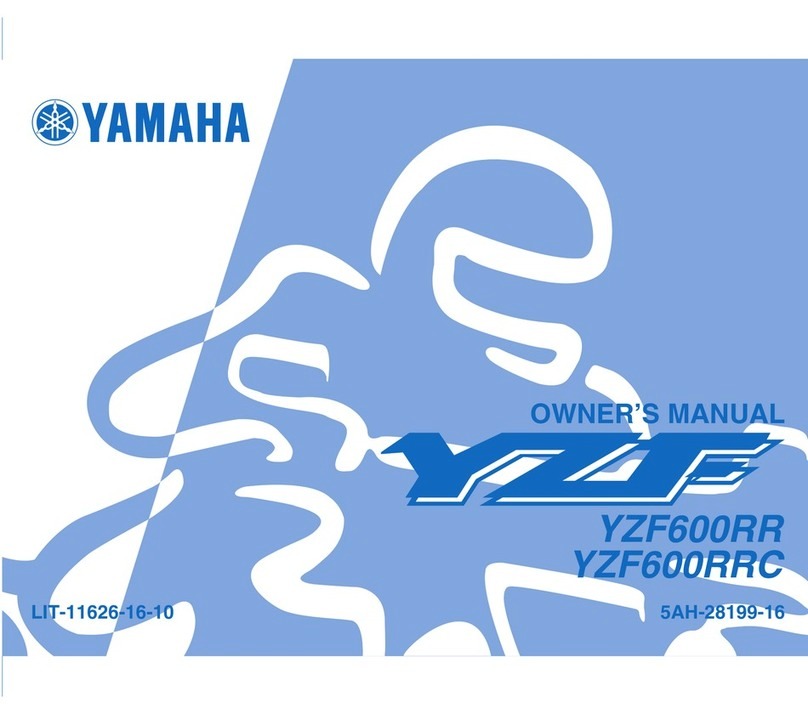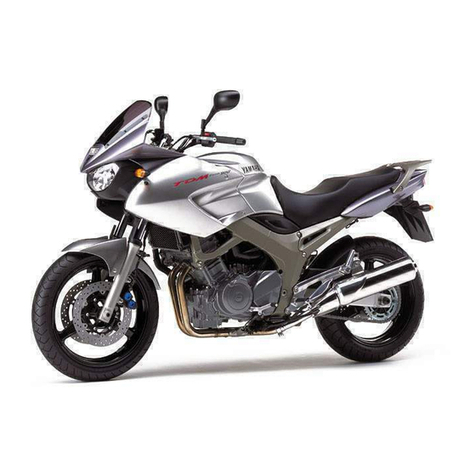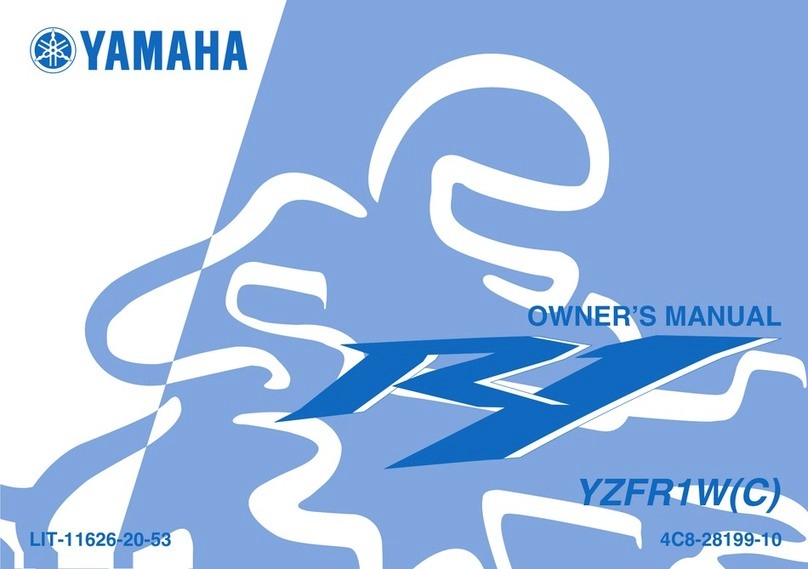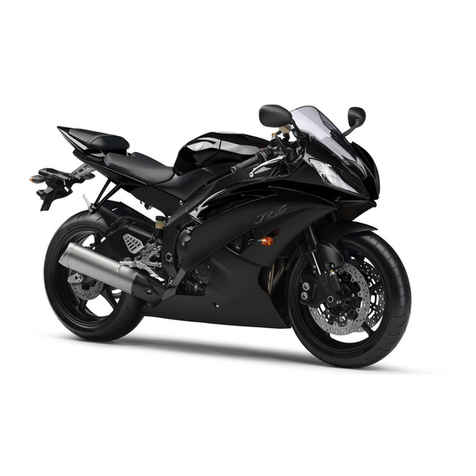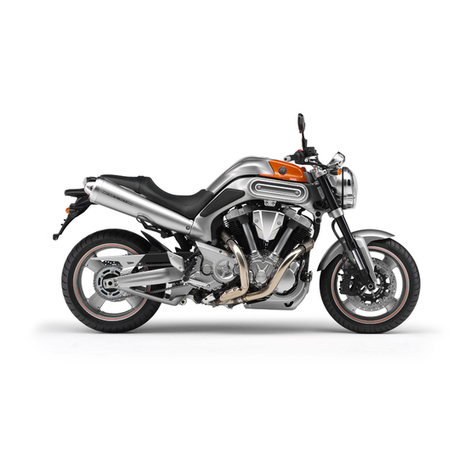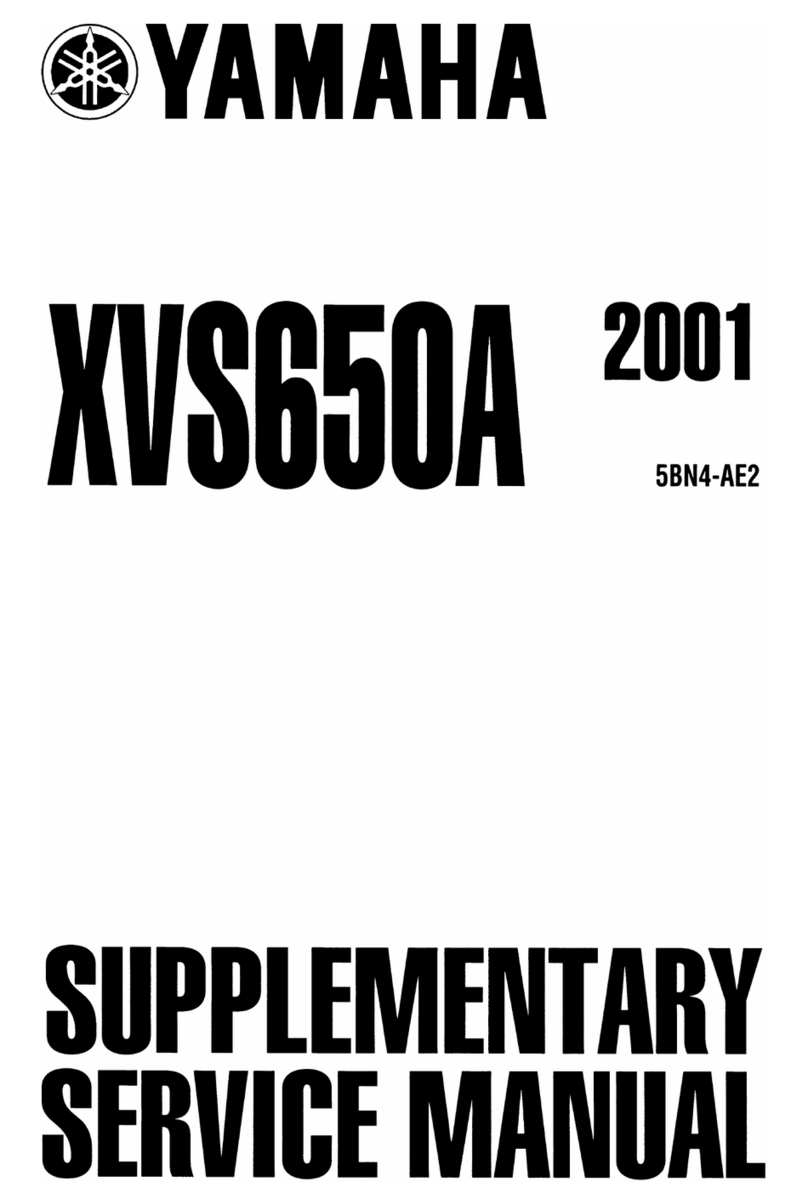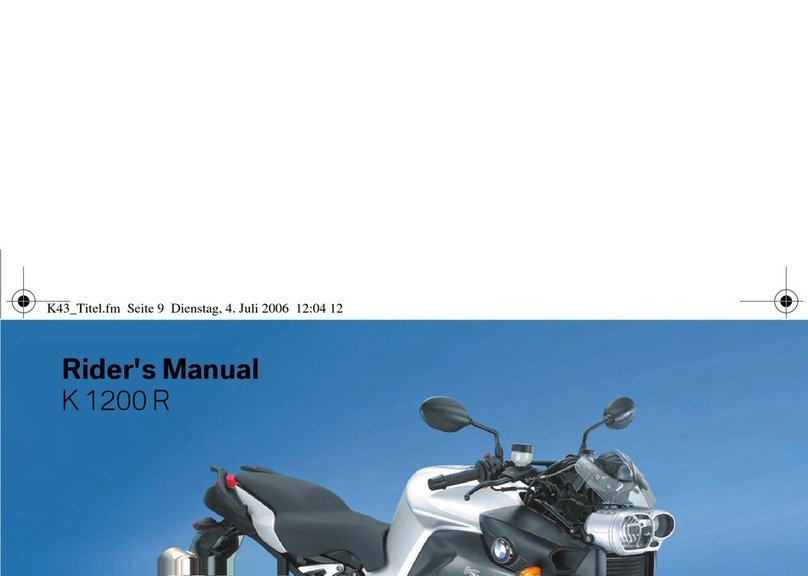
Table of contents
Safety information ............................ 1-1
Description ........................................ 2-1
Left view .......................................... 2-1
Right view ........................................ 2-2
Controls and instruments................. 2-3
Instrument and control functions.... 3-1
Immobilizer system.......................... 3-1
Main switch/steering lock................. 3-2
Indicator lights and warning lights ... 3-4
Multi-function meter unit .................. 3-6
D-mode (drive mode)..................... 3-13
Handlebar switches ....................... 3-14
Clutch lever.................................... 3-16
Shift pedal...................................... 3-16
Brake lever .................................... 3-16
Brake pedal ................................... 3-17
ABS ............................................... 3-17
Traction control system ................. 3-18
Fuel tank cap ................................. 3-20
Fuel................................................ 3-20
Fuel tank breather hose and
overflow hose ............................. 3-22
Catalytic converter......................... 3-22
Seat ............................................... 3-23
Storage compartment .................... 3-23
Adjusting the front fork................... 3-24
Adjusting the shock absorber
assembly .................................... 3-25
Luggage strap holders................... 3-27
Sidestand ...................................... 3-27
Ignition circuit cut-off system......... 3-28
Auxiliary DC connector.................. 3-30
For your safety – pre-operation
checks ............................................... 4-1
Operation and important riding
points................................................. 5-1
Starting the engine .......................... 5-1
Shifting ............................................ 5-2
Tips for reducing fuel
consumption ................................ 5-4
Engine break-in ............................... 5-4
Parking ............................................ 5-5
Periodic maintenance and
adjustment ........................................ 6-1
Owner’s tool kit................................ 6-2
Periodic maintenance chart for the
emission control system .............. 6-3
General maintenance and
lubrication chart ........................... 6-4
Checking the spark plugs................ 6-8
Canister........................................... 6-9
Engine oil and oil filter cartridge ...... 6-9
Coolant.......................................... 6-12
Air filter element ............................ 6-15
Checking the engine idling
speed ......................................... 6-15
Checking the throttle grip free
play............................................. 6-15
Valve clearance ............................. 6-16
Tires............................................... 6-16
Cast wheels ................................... 6-18
Adjusting the clutch lever free
play............................................. 6-19
Checking the brake lever free
play............................................. 6-19
Brake light switches ....................... 6-20
Checking the front and rear brake
pads............................................ 6-20
Checking the brake fluid level........ 6-21
Changing the brake fluid................ 6-22
Drive chain slack............................ 6-23
Cleaning and lubricating the
drive chain .................................. 6-24
Checking and lubricating the
cables ......................................... 6-25
Checking and lubricating the
throttle grip and cable................. 6-25
Checking and lubricating the
brake and shift pedals ................ 6-26
Checking and lubricating the
brake and clutch levers .............. 6-26
Checking and lubricating the
sidestand .................................... 6-27
Lubricating the swingarm pivots .... 6-27
Checking the front fork................... 6-28
Checking the steering .................... 6-28
Checking the wheel bearings......... 6-29
B90-9-E0_1.book 1 ページ 2015年12月15日 火曜日 午後8時5分


